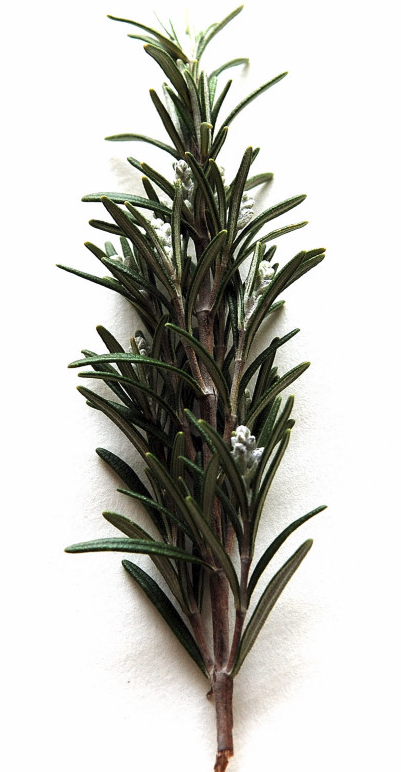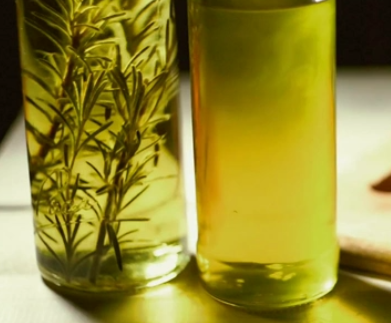| "Descrizione" by AColumn (9336 pt) | 2023-Jul-31 12:14 |
Review Consensus: 10 Rating: 10 Number of users: 1
| Evaluation | N. Experts | Evaluation | N. Experts |
|---|---|---|---|
| 1 | 6 | ||
| 2 | 7 | ||
| 3 | 8 | ||
| 4 | 9 | ||
| 5 | 10 |
Rosmarinus officinalis leaf oil is obtained by steam extraction and is a term found in the ingredient list of cosmetic and pharmaceutical formulations.
Rosemary ( Rosmarinus officinalis L.) is an intensely fragrant evergreen plant that grows in Mediterranean countries and belongs to the Lamiaceae family.
The oil from the leaves of Rosmarinus officinalis, also known as rosemary essential oil, is extracted from the rosemary plant's leaves. Here's a detailed description of the oil and its extraction process.
Decomposition of the name and function of the components
- Rosmarinus - The genus of the plant from which the oil is derived, known as rosemary.
- officinalis - Indicates the specific species of the rosemary plant.
- Leaf Oil - Specifies that the oil is extracted from the leaves of the plant.

Description and function of the raw materials used in production
Rosemary leaves - The leaves are the primary part from which the essential oil is derived. They contain beneficial and aromatic compounds like cineole, camphene, limonene, and others.
Steam - Used in the steam distillation process to extract the essential oil from the leaves.
Summary of the extraction process
- Harvesting - Rosemary leaves are harvested from the plant.
- Distillation - The leaves are exposed to steam in a still. The heat causes the aromatic compounds within the leaves to evaporate.
- Condensation - The aromatic steam is then cooled and condensed to form the liquid essential oil.
- Separation - The essential oil is separated from the residual water.
- Storage - The essential oil is stored in glass containers to shield it from light and maintain its freshness and potency.

What it is used for and where
Cosmetics
Fragrance. It plays a decisive and important role in the formulation of cosmetic products as it provides the possibility of enhancing, masking or adding fragrance to the final product, increasing its marketability. It is able to create a perceptible pleasant odour, masking a bad smell. The consumer always expects to find a pleasant or distinctive scent in a cosmetic product.
Skin conditioning agent. It is the mainstay of topical skin treatment as it has the function of restoring, increasing or improving skin tolerance to external factors, including melanocyte tolerance. The most important function of the conditioning agent is to prevent skin dehydration, but the subject is rather complex and involves emollients and humectants that can be added in the formulation.
Medical
In the phytochemical analysis, 18 components were identified, namely 13 flavones, two organic acids and three diterpenes. A total of 82 components were found in the volatile fractions, including hydrocarbon monoterpenes and 1,8-cineole, camphor, borneol and verbenone as dominant components, α-pinene and camphene among the oxygenated monoterpenes (1).
Among the polyphenolic components present in rosemary, carnosic acid has antioxidant and antimicrobial properties and rosmarinic acid has neuroprotective and anti-inflammatory properties.
Rosmarinic acid also has anti-oxidative properties.
Rosemary extract exerts a relaxing action on the muscles of the trachea and intestines and has therapeutic potential in the prevention of various diseases including cataracts, atherosclerosis, peptic ulcer disease, and cardiovascular disorders (2).
Rosemary essential oil obtained from leaves or flowers is used in dermatology to treat wounds and minor skin eruptions, in gastrointestinal disorders as an anti-dispeptic, diuretic and antispasmodic in renal colic (3), in neurology for headaches and circulation problems, in pneumology as an expectorant.
Cosmetics
This oil is included in cosmetic formulations as an emollient and as a fragrance and can activate, through the flavonoids it contains, different pharmacological effects useful in cosmetics such as antimicrobial action, skin relaxing. disinfectant.
Fragrance. It plays a very important role in the formulation of cosmetic products as it allows perfume to be enhanced, masked or added to the final product, improving its commercial viability. The consumer always expects to find a pleasant scent in a cosmetic product.
Skin conditioning agent - Miscellaneous. This ingredient has the task of modifying the condition of the skin when it is damaged or dry by reducing its flakiness and restoring its elasticity.
Food
Used as a spice and seasoning in foods and as a natural preservative in the food industry.
CAS 8000-25-7 generic
EC number 283-291-9
References__________________________________________________________________
(1) Napoli EM, Siracusa L, Saija A, Speciale A, Trombetta D, Tuttolomondo T, La Bella S, Licata M, Virga G, Leone R, Leto C, Rubino L, Ruberto G. Wild Sicilian rosemary: phytochemical and morphological screening and antioxidant activity evaluation of extracts and essential oils. Chem Biodivers. 2015 Jul;12(7):1075-94. doi: 10.1002/cbdv.201400274.
(2) al-Sereiti MR, Abu-Amer KM, Sen P. Pharmacology of rosemary (Rosmarinus officinalis Linn.) and its therapeutic potentials. Indian J Exp Biol. 1999 Feb;37(2):124-30. Review.
(3) Ulbricht C, Abrams TR, Brigham A, Ceurvels J, Clubb J, Curtiss W, Kirkwood CD, Giese N, Hoehn K, Iovin R, Isaac R, Rusie E, Serrano JM, Varghese M, Weissner W, Windsor RC. An evidence-based systematic review of rosemary (Rosmarinus officinalis) by the Natural Standard Research Collaboration. J Diet Suppl. 2010 Dec;7(4):351-413. doi: 10.3109/19390211.2010.525049.
| Evaluate |

